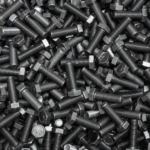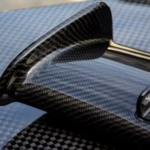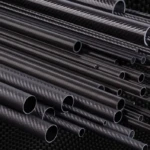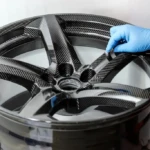3D printing has revolutionized the manufacturing industry, providing limitless design capabilities and making prototyping more accessible to everyone. Among the many materials available for 3D printing, rubber is an intriguing option that allows for flexibility, durability, and the creation of functional prototypes. In this article, we will explore how to 3D print rubber using both filament and resin, covering the types of materials available, the best practices for printing, and creative applications.
Understanding Rubber 3D Printing Materials
When it comes to 3D printing with rubber, there are primarily two types of materials to consider: thermoplastic elastomers (TPE) for filament printers and flexible resin for resin printers. Each material has its pros and cons, and your choice will largely depend on your specific needs.
1. Filament: Thermoplastic Elastomers (TPE)
TPE is a popular choice for 3D printing rubber-like parts due to its flexible nature and strong mechanical properties. Here’s what you need to know about TPE filament:
Properties of TPE Filament
- Flexibility: TPE is known for its excellent flexibility, allowing parts to bend without breaking, making it ideal for applications like gaskets, seals, and grips.
- Durability: TPE exhibits superior wear resistance compared to standard thermoplastics, making printed parts more durable over time.
- Compatibility: Many TPE filaments are compatible with common FDM/FFF 3D printers, which makes them easy to source and use.
2. Resin: Flexible Resins
For resin printing enthusiasts, flexible resin is the answer to achieving rubber-like properties. Flexible resins are formulated to be softer and more elastic compared to standard resins.
Properties of Flexible Resins
- High Level of Detail: Resin printers can achieve finer details and smoother finishes than typical FDM printers.
- Softness: Flexible resins can be customized to create varying degrees of softness, allowing for the perfect balance of flexibility and strength depending on the application.
- Applications: Flexible resins are ideal for applications such as custom-fit wearables, prototypes, and functional parts requiring precise detailing.
Preparing for 3D Printing Rubber
No matter whether you choose filament or resin, preparing both your printer and your model is essential for successful printing.
Choosing the Right Printer
- FDM Printers for TPE: Ensure your 3D printer has a direct drive extruder for optimal filament feeding. A heated bed can also help with adhesion, reducing the likelihood of warping.
- SLA/DLP Printers for Resin: Use a printer that supports flexible resins, which requires specific settings in terms of UV exposure times and layer thickness.
Designing Your Model
- Consider the Design Complexity: Complex designs may require supports. However, be mindful that supports can be challenging to remove without damaging the printed part, especially with flexible materials.
- Add Drainage Holes: If you’re printing a hollow object, consider adding drainage holes to relieve any pressure build-up within the model.
Slicing Settings
Slicing software plays a crucial role in determining the success of your print. Here are some important settings to configure:
- Layer Height: For better flexibility, consider using thicker layers since they provide a stronger bond between layers.
- Print Speed: Slower print speeds can lead to better adhesion and can improve overall print quality.
- Infill Density: Lower infill percentage is recommended for maintaining flexibility; around 10-20% is usually ideal.
Tips for 3D Printing TPE Filament
Printing with TPE can be a tad more challenging than other filaments, but with these best practices, you can achieve excellent results.
1. Print Temperature and Bed Adhesion
- Temperature: TPE generally prints at lower temperatures than standard PLA or ABS, typically around 220-250°C. However, always refer to the manufacturer’s specifications for optimal results.
- Bed Surface: A textured surface like PEI or BuildTak can help with adhesion. Some users opt for glue sticks or painter’s tape for a smoother surface.
2. Direct Drive Extrusion
Direct drive systems allow for better filament control. If you’re using a Bowden setup, consider adding a filament guide to reduce bending and slowing filament feeding during tighter bends.
3. Cooling Fans
Using a cooling fan can help solidify the filament but use it sparingly as too much cooling can adversely affect layer adhesion.
Tips for 3D Printing Flexible Resins
Resin printing requires different considerations compared to filament, so here are the top tips for successful 3D printing with flexible resins.
1. Print Orientation
The orientation of your model can significantly affect its detail and flexibility. A vertical orientation is typically ideal, as it supports the weight of the resin during the print.
2. Layer Thickness and Exposure Time
Choose a layer thickness that balances quality with speed—0.05 to 0.1mm is usually a good range. Adjust the exposure time settings according to the resin manufacturer’s recommendations, as softer flexible resins often need longer exposure times.
3. Post-Processing
After printing, flexible resins generally require post-curing. Use UV light to harden your model further, enhancing its strength and flexibility.
Applications of 3D Printed Rubber
With the ability to print rubber-like materials, a multitude of applications arises. Here are some areas where rubber 3D printing shines:
Prototyping
Creating prototypes of products that require elasticity—such as medical devices, automotive parts, or consumer goods—is facilitated through 3D printing, offering rapid iterations and cost-effectiveness.
Custom Parts
From customized phone cases with grips to bespoke footwear and custom-fit wearables, the versatility of rubber printing meets both functional and aesthetic demands.
Robotics and Engineering
Many robotics applications require flexible components like flexible joints and soft actuators. 3D printed rubber materials allow engineers and designers to create parts that mimic biological muscle structures.
Conclusion
3D printing rubber-like materials has opened new horizons for both hobbyists and professionals alike. The choice between TPE filament and flexible resin depends on personal preferences and specific application needs. Whether you’re creating functional prototypes, customized fittings, or durable parts, understanding the nuances of rubber 3D printing can elevate your projects to a whole new level of creativity and efficiency.
By adhering to best practices and utilizing the right tools and materials, you can unlock the full potential of 3D printing with rubber, bringing to life designs that were once only imagined. Whether you are a seasoned veteran or just starting, the ability to print flexible, durable, and high-quality rubber objects can greatly enhance your creative capabilities in 3D printing.
Daguang focuses on providing solutions such as precision CNC machining services (3-axis, 4-axis, 5-axis machining), CNC milling, 3D printing and rapid prototyping services.

















